By Joseph Essertier, World BEYOND War, May 24, 2023
Essertier is Organizer for World BEYOND War’s Japan Chapter.
Today Hiroshima is a “city of peace” for many people. Among those who are citizens of Hiroshima, there are people (some of them hibakusha or “A-bomb victims”) who have constantly made efforts to warn the world about the dangers of nuclear weapons, promote reconciliation with the victims of the Empire of Japan (1868–1947), and cultivate tolerance and multicultural living. In that sense, it truly is a city of peace. On the other hand, for many decades, the city was a center of military activities for the Empire, playing major roles in the First Sino-Japanese War (1894-95), the Russo-Japanese War (1904-05), and the two World Wars. In other words, it also has a dark history as a city of war.
But on 6 August 1945, President Harry Truman, who called the city a “military base,” dropped a nuclear bomb on people there, mostly civilians. Thus began what could be called our species’ “nuclear war threat era.” Soon after that, in a few decades, with other states jumping on the nuclear bandwagon, we arrived at a point in our ethical development when we faced the threat of nuclear winter for all humanity. That first bomb was given the sad, toxic-masculinity-sick name “Little Boy.” It was small by today’s standards, but it turned many beautiful human beings into what looked like monsters, immediately brought incredible pain to hundreds of thousands, instantly destroyed the city, and ended up killing over one hundred thousand people over the course of a few months.
That was at the end of the Pacific War (1941-45) when it was recognized that the United Nations (or “Allies”) had already won. Nazi Germany had surrendered many weeks before (in May of 1945), so the Imperial Government had already lost its main ally, and the situation was hopeless for them. Most of Japan’s urban areas had been flattened and the country was in a desperate situation.
Dozens of countries were allied to the U.S. through the “Declaration by United Nations” of 1942. This was the main treaty that formally established the Allies of World War II and that became the basis for the United Nations. This treaty had been signed by 47 national governments by the end of the War, and all those governments had committed themselves to using their military and economic resources to defeat the Empire. Signers of this Declaration pledged to fight until there was a “complete victory” over the Axis powers. (This was interpreted as “unconditional surrender.” That meant that the United Nations side would not accept any demands. In the case of Japan, they would not even accept the demand that the institution of the emperor be retained, so this made it difficult to end the War. But after bombing Hiroshima and Nagasaki, the U.S. allowed Japan to retain the emperor anyway).
Over-the-top vengeance? War crime? Over-kill? Experiment using human beings instead of lab rats? Sadism? There are various ways to describe the crime that Truman and other Americans committed, but it would be hard to call it “humanitarian” or believe the fairy tale told to Americans of my generation that it was done in order to save the lives of Americans and Japanese.
Now, sadly, the City of Hiroshima has once again begun to threaten the lives of people outside and inside Japan, under pressure from Washington and Tokyo. There are more than a few military facilities within the vicinity of the City of Hiroshima, including U.S. Marine Corps Air Station Iwakuni, Japan Maritime Self-Defense Force Kure Base (Kure Kichi), United States Army Kure Pier 6 (Camp Kure U.S. Army Ammunition Depot), and the Akizuki Ammunition Depot. Added to the existence of these facilities, the new military build-up that was announced in December increases the likelihood that they will actually be used to kill other people in East Asia. This should make people reflect on how Hiroshima continues to be a city of both war and peace, of perpetrators and of victims.
And so it was, on the 19th of May in this “City of Peace,” in the midst of active, grassroots, peace advocacy on the one hand, and active elite cooperation with Washington and Tokyo’s military objectives on the other, the multi-armed monster called “the G7” slithered into town, causing trouble for the citizens of Hiroshima. The heads of each of the G7 states controls one arm of the monster. Surely Trudeau and Zelensky control the smallest and shortest arms. Amazingly, the life of this monster, that is pushing the world toward nuclear catastrophe by not going back to the Minsk Agreements, is considered so precious that Japan sent tens of thousands of regular police and other types of security personnel, including riot police, security police, secret police (Kōan keisatsu or “Public Security Police”), medical and other support staff. Anyone in Hiroshima during the G7 Summit (19 to 21 May) could see that this was a “spare no expense” kind of affair. If the cost of policing the G7 Summit in Cornwall, England in June 2021 in Cornwall, England was £70,000,000, one can only imagine how much yen was spent on policing and in general, hosting this event.
I have already touched on the reasoning behind the decision of the Japan chapter of World BEYOND War to oppose the G7 in “An Invitation to Visit Hiroshima and Stand Up for Peace during the G7 Summit,” but besides the obvious one, that “the doctrine of nuclear deterrence is a false promise that has only made the world a more dangerous place” and the fact that the G7 has our rich countries on track to go to war with nuke-armed Russia, there is one other reason that I heard expressed many times by people from various organizations in Hiroshima during the 3 days of the Summit, including citizens groups and labor unions: And that is the gross injustice of these former colonizer countries, especially the U.S., using the City of Peace, a place where hibakusha and the descendants of hibakusha live, for a war conference that could possibly lead to a nuclear war.
With feelings such as this, over a dozen of us decided to try something different. On Saturday the 20th,we rented “Peacecles” (peace+bicycles), put placards on our bodies or on our bicycles, rode around the City of Hiroshima, stopping occasionally to give our message orally with a loudspeaker, and joined peace marches. We really did not know how it would turn out, or if we would be able to do carry out our plan amidst the heavy police presence, but in the end, it proved to be a pretty fun way to protest. The bikes provided us with extra mobility and allowed us to cover a lot of ground in a short amount of time.
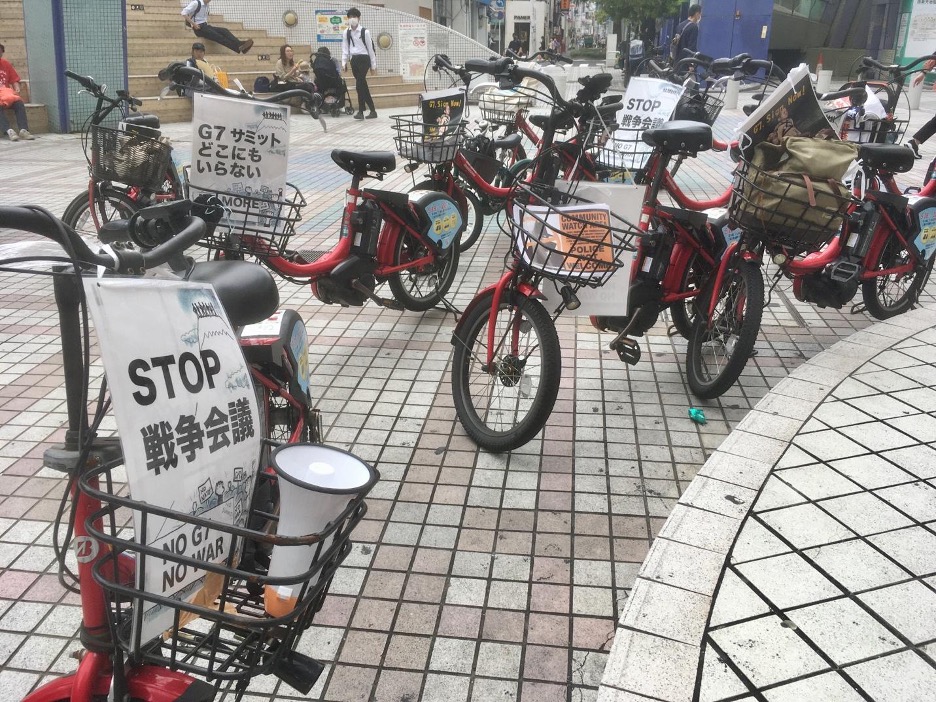
The above photo shows our bikes after we parked at a public park and took a lunch break.
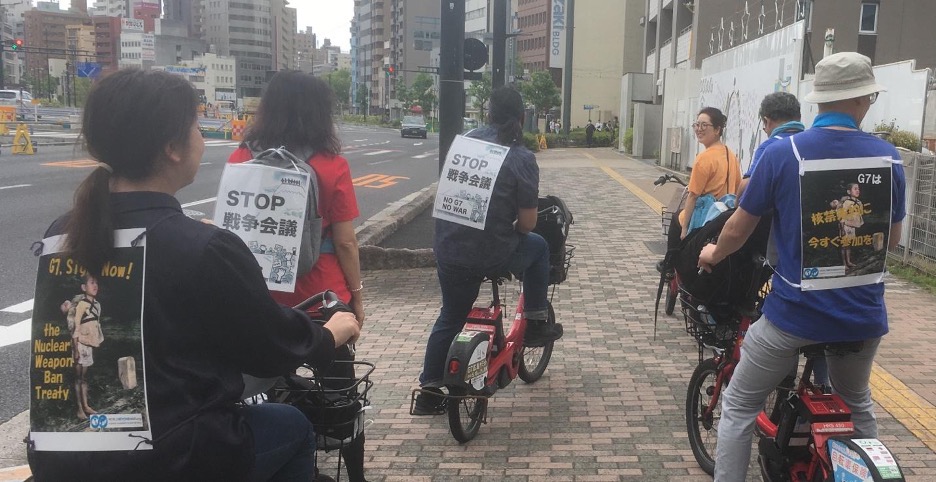
The signs that hang from our shoulders with the WBW logo read “G7, Sign now! the Nuclear Weapon Ban Treaty,” in both Japanese and English. That was the main message that our chapter decided on, over the course of a few weeks of discussions, to deliver. Some others also joined us, and their white signs say, “Stop the War Meeting” in Japanese and “No G7, No war” in English.
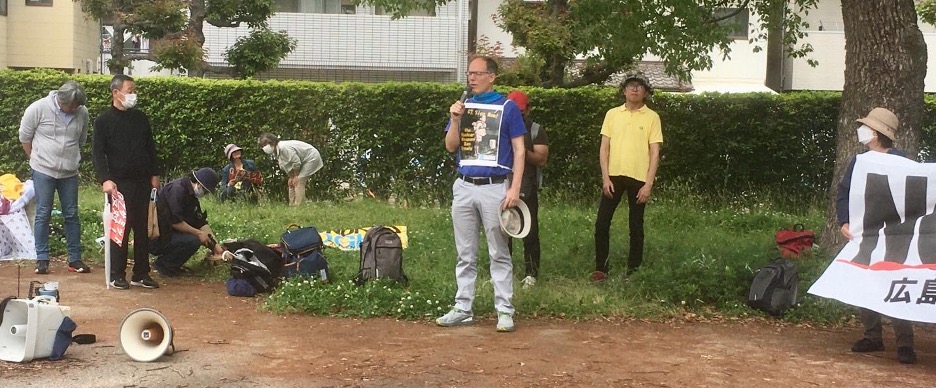
I (Essertier) was given the opportunity to make a speech before the start of one march in the afternoon. The group to which I spoke had a large contingent of labor union members.
Here is what I said: “We aim for a world without war. Our organization started in the U.S. The name of our group is ‘World BEYOND War.’ My name is Joseph Essertier. I am American. Nice to meet you. With this terrifying monster G7 having come to Japan, we hope, with you, to protect Japan from it. As you know, most of the members of G7 are also members of NATO. The G7 are greedy, as you know. They want to make the rich even richer and make the powerful even more powerful, and to exclude the disadvantaged—to abandon them. Workers created all this wealth around us, but in spite of that, the G7 is attempting to abandon us. World BEYOND War wants to make it possible for all the people of the world to live in peace. Biden is really about to do something totally unacceptable, isn’t he? He is about to send F-16s to Ukraine. NATO has threatened Russia all along. There are some good people in Russia, aren’t there? There are some good people in Russia and there are some bad people in Ukraine. There are various kinds of people. But everyone has the right to live. There is a real chance now of nuclear war. Every day is like the Cuban Missile Crisis. Every day now is like that time, like that one week, or those two weeks, long ago. We have to stop this war immediately. Every day matters. And we want Japan to sign the TPNW right away.”
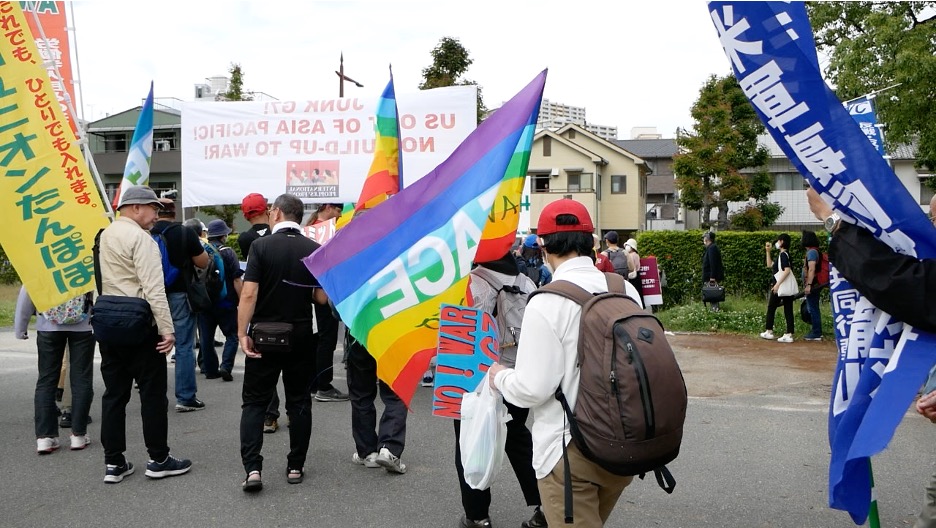
After the various speeches were finished, we headed out to march on the street with the other organizations.
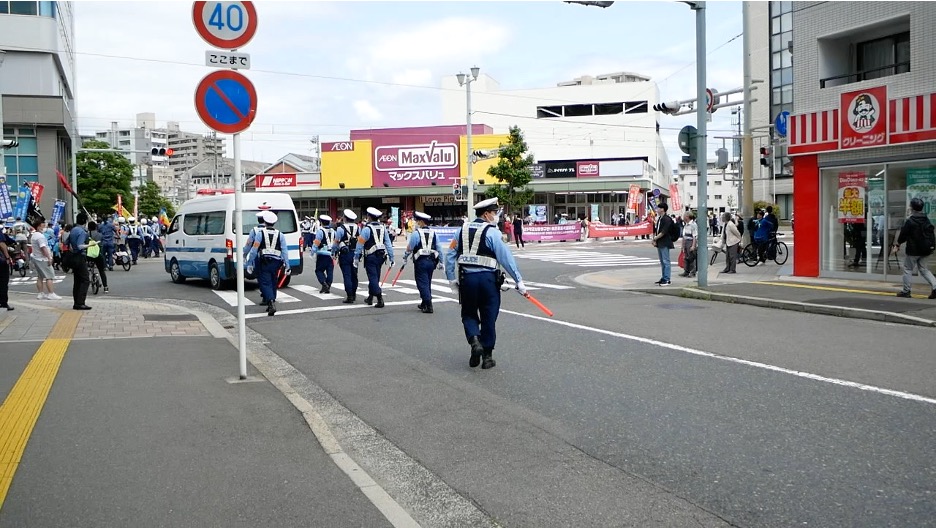
We were at the back of the march with the police following up behind us.
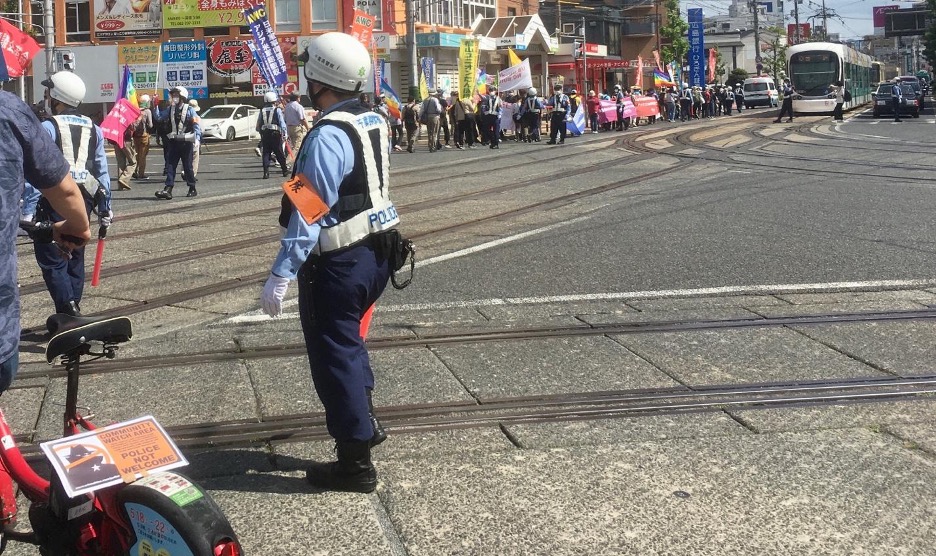
I saw a few intersections with trolley cars like this in Hiroshima. The Peacecles are well designed for bumpy roads, so riding across the tracks was not a problem. It was somewhat humid and perhaps 30 degrees Celsius (or 86 degrees Fahrenheit) at one point in the afternoon, so we took a break at an air-conditioned department store.
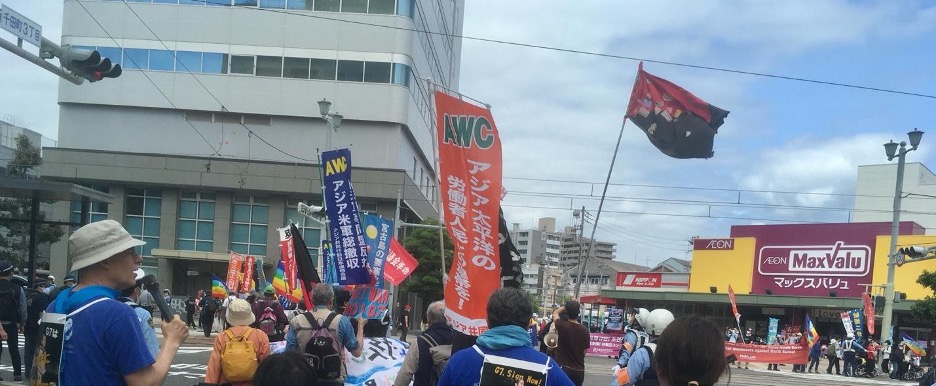
The bikes gave us an ability to go to where the people were and the basket on the front of the bike allowed us to speak on a portable loudspeaker. Our main chant was “No war! No nukes! No G7s anymore!”
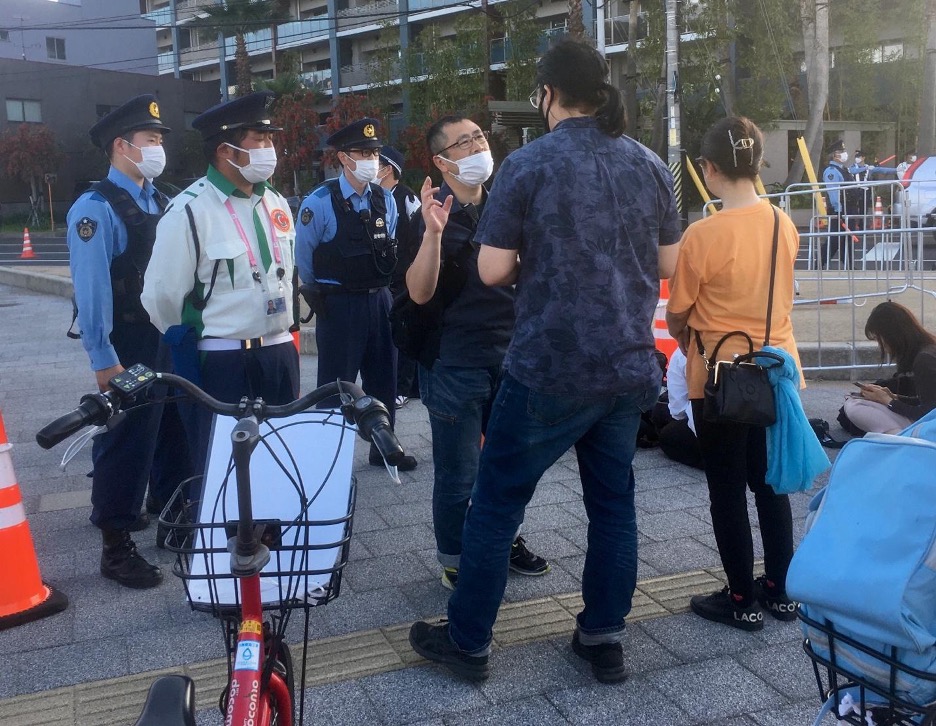
Toward the end of the day, we had a little extra time and were not far from the Ujina district, where the G7 agents of violence had gathered at one point. Some of us might have been “deeply moved” but many of us were angry at the fact that “political leaders from countries that once engaged in warfare” gathered in a place that is “deeply connected to Japan’s wartime history.”
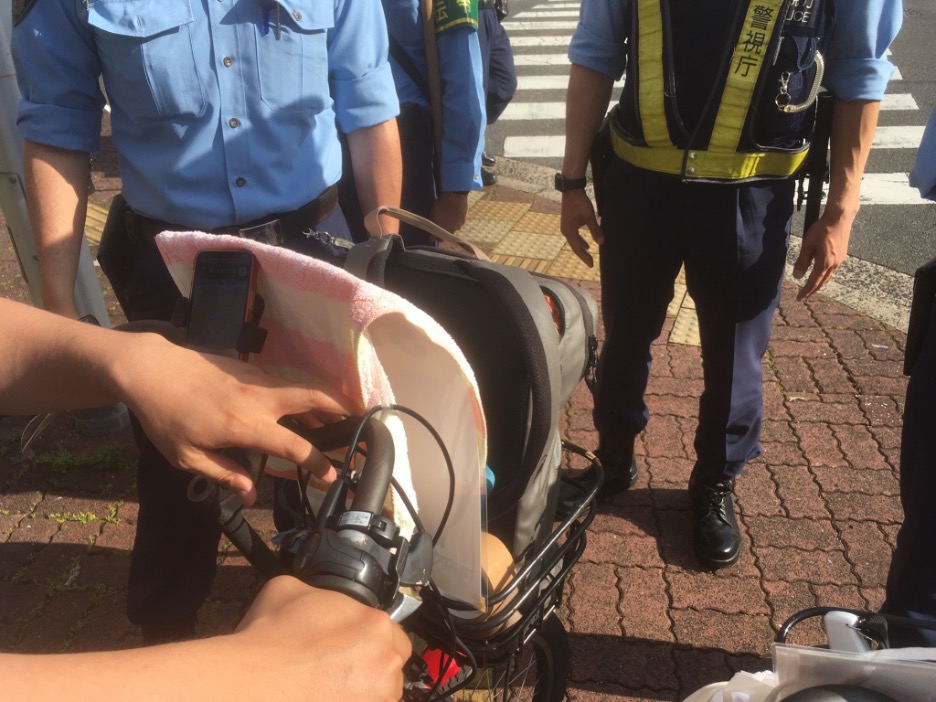
We were stopped at this spot, which was a checkpoint for people heading to Ujina. To me, the many questions from the police seemed fruitless as far as our group was concerned, so after 5 minutes or so, I said something to the effect of, “OK, there is no freedom of expression in this district. I see.” And I turned around and headed for Hiroshima Station, which was in the opposite direction, in order to send off some of our members. People were unable to exercise their right to freedom of expression, and although some of our members spoke to the police at length, they could not provide to us any explanation of a legal basis for preventing our members from proceeding on this public street and expressing our opinions about the Summit in the Ujina district.
Fortunately for us, our group of a dozen or so was not surrounded by police as tightly as the protestors in this Forbes video, but even in the protests that I participated in, it sometimes felt like there were too many of them and they were too close.
We garnered much attention from people on the streets, including from journalists. DemocracyNow! included video in which appeared Satoko Norimatsu, a famous journalist who has frequently contributed to the Asia-Pacific Journal: Japan Focus and who maintains a website “Peace Philosophy” that makes available many important peace-related Japanese documents in English, as well as vice versa. (Satoko appears at 18:31 in the clip). She often comments on Japan news on her Twitter page, i.e., @PeacePhilosophy.
Saturday was a very hot day, perhaps 30 degrees Celsius and somewhat humid, so I enjoyed the feel of the wind on my face when we were riding together. They cost us 1,500 yen each for the day. The blue scarfs that symbolize peace we were able to find for less than 1,000 yen each.
All in all, it was a good day. We were lucky that it did not rain. Many of the people we met were cooperative, such as two ladies who carried our banner for us so that we could walk with our bikes, and many of the people we met complimented us on the “Bicycle Peace Caravan” concept. I recommend that people in Japan and other countries try this some time. Please develop the idea further, however it might work in your area, and share your thoughts and tell us about your experiences here at World BEYOND War.

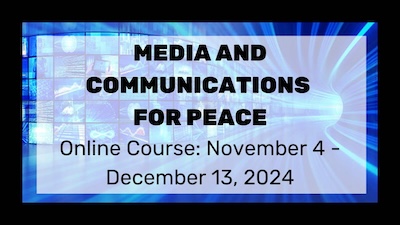

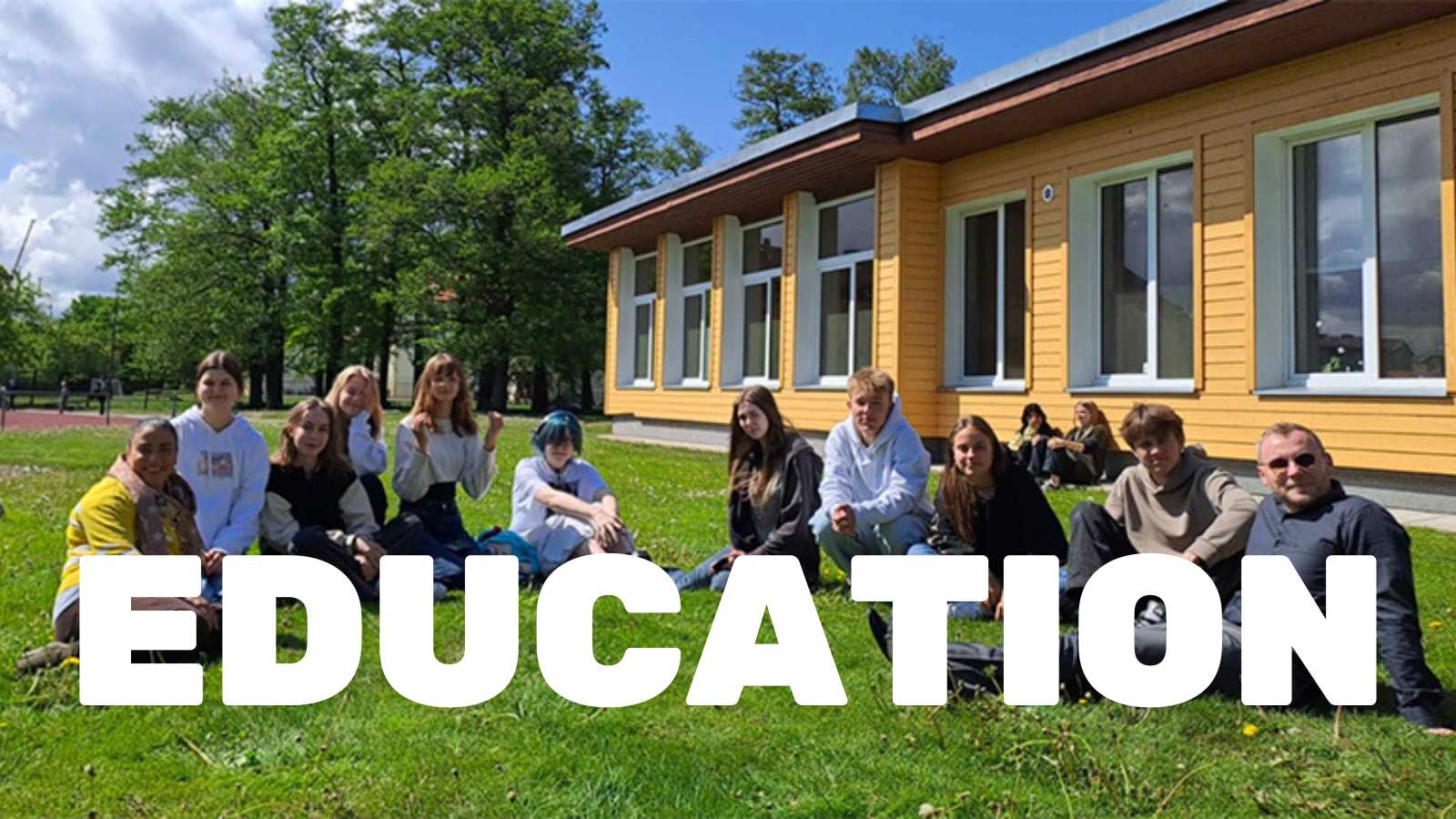
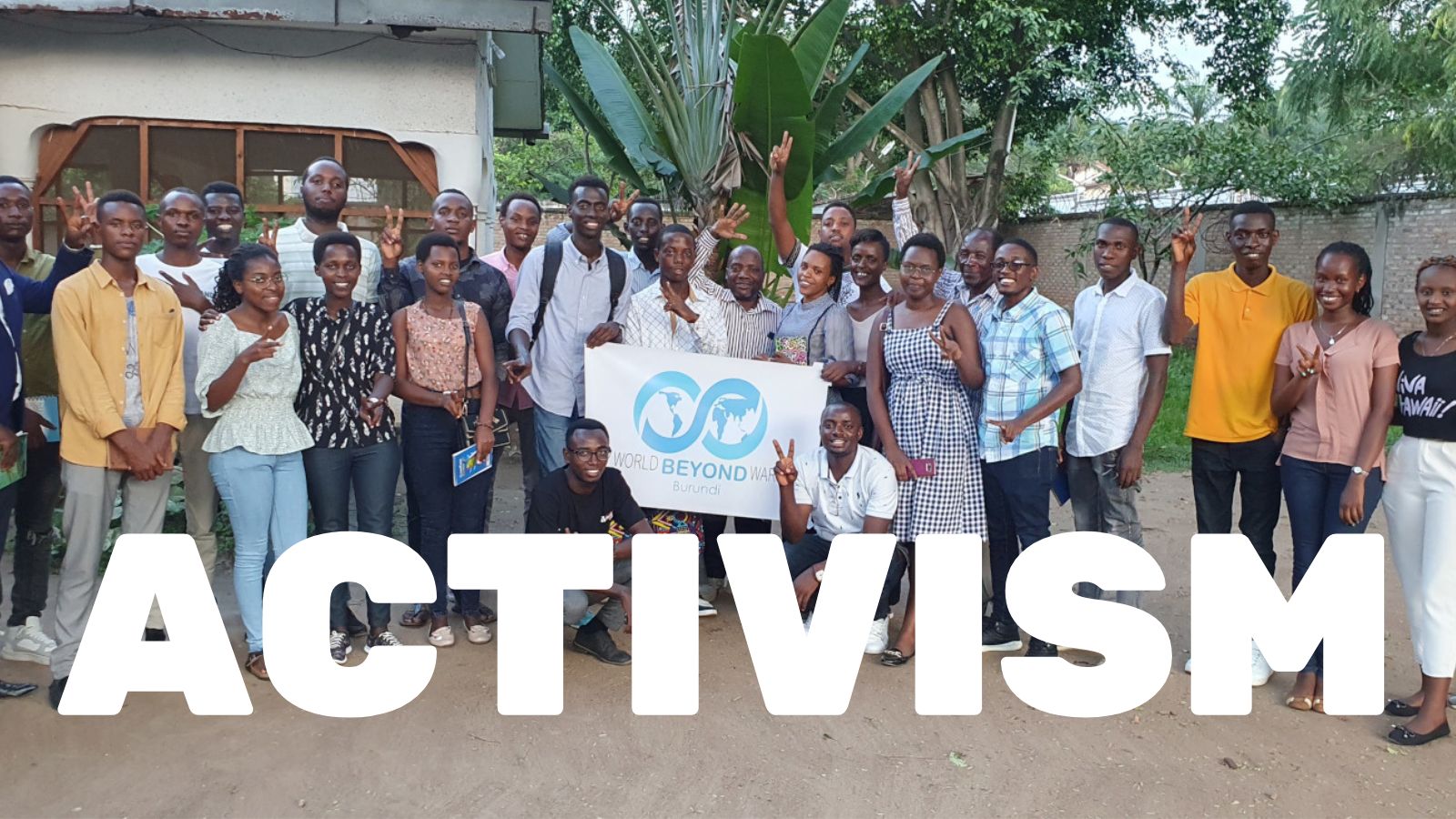
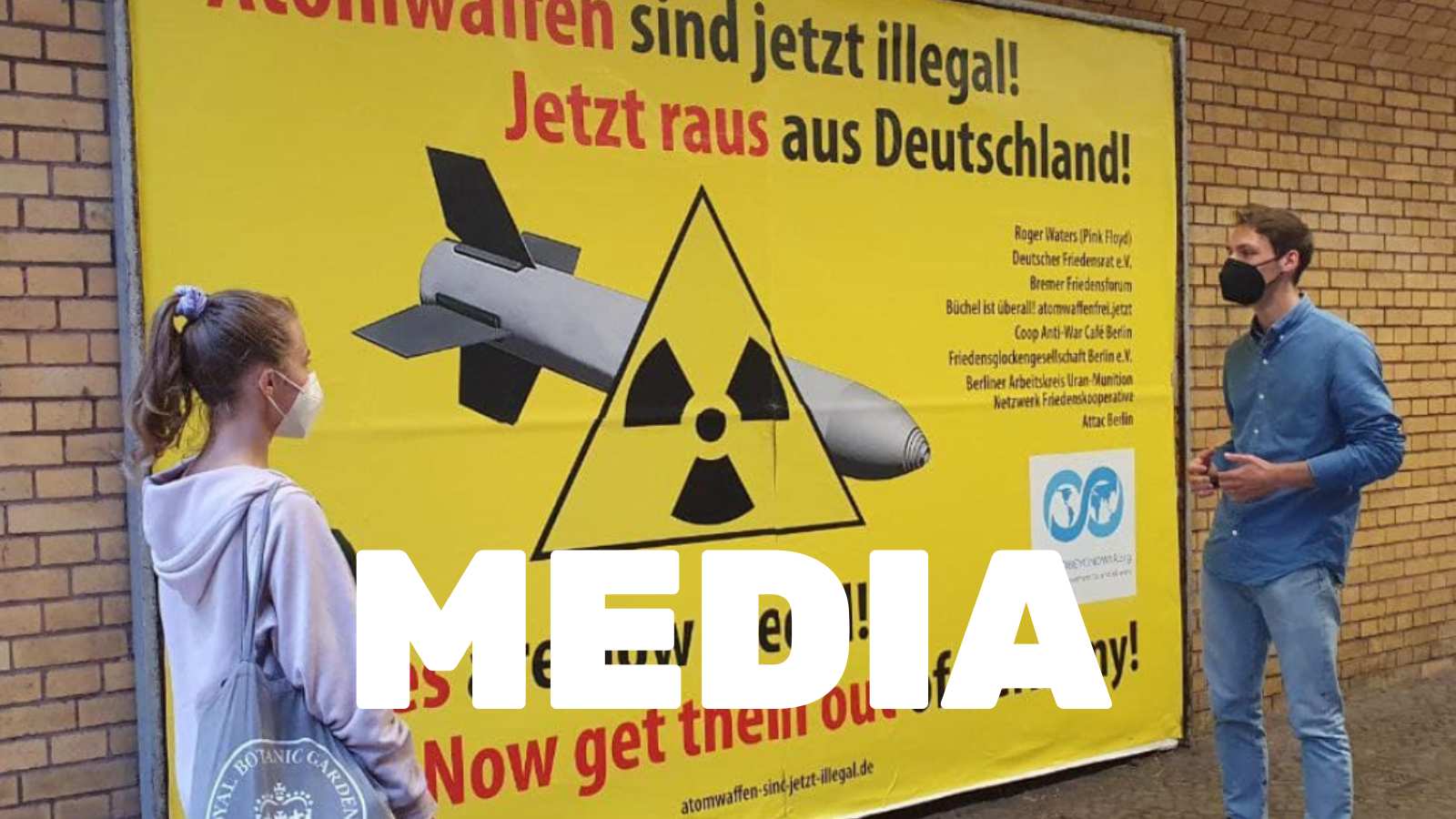
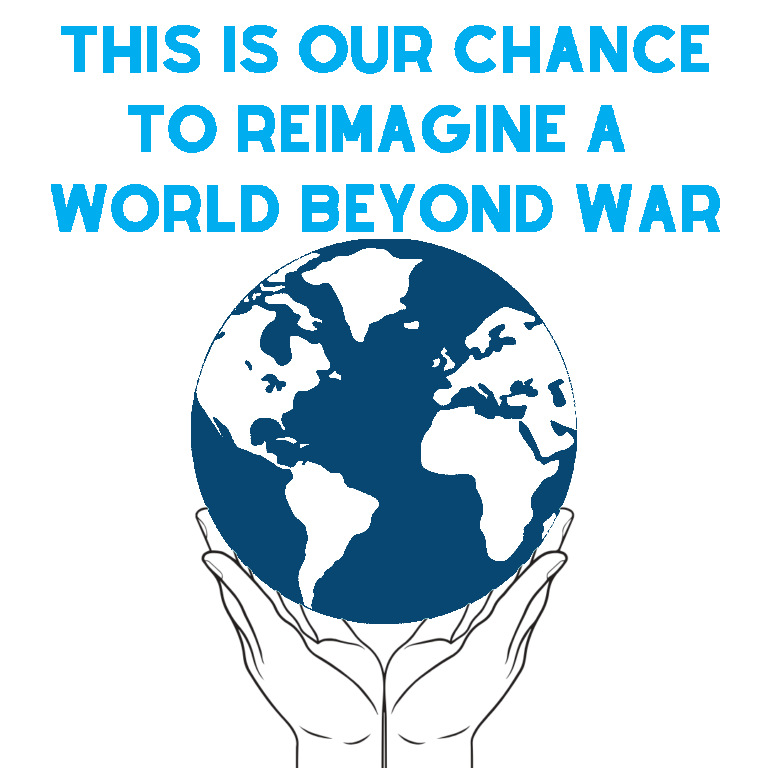
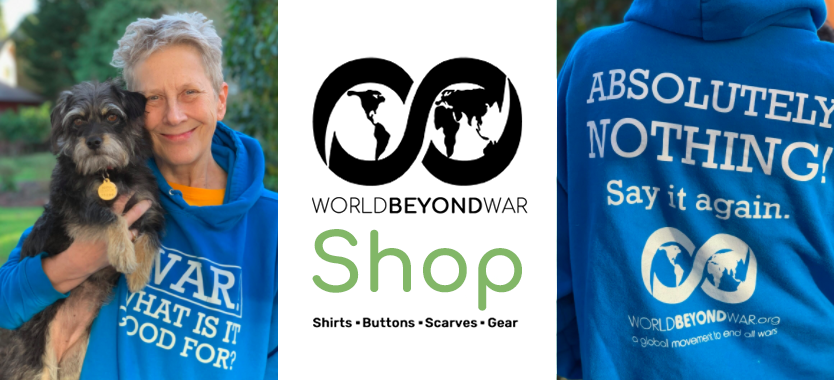
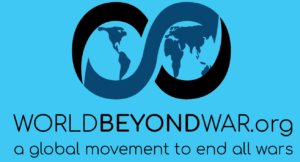
One Response
I am really moved by this caravan of young prople who mounted their bicycles through Hiroshima carrying a clear message right in the very place where the nations gathered in the G7 where planning going on with war.
You brought a message. More than a message,a cry that expresses the feelings of all the good people in this World. NOT TO WAR. PEOPLE WANT PEACE. At the same time you expossed the cynicism of those who gathered in the same place where, on August 6th,1945, by order of President Harry Truman, the EEUU dropped the first nuclear bomb, killing hundred of thousands of inocents starting a race that once again puts us on the edge of abyss. What you did make me feel proud of humanity . THANKS and CONGRATULATIONS. With all my love
LIDIA. Argentine Maths Teacher